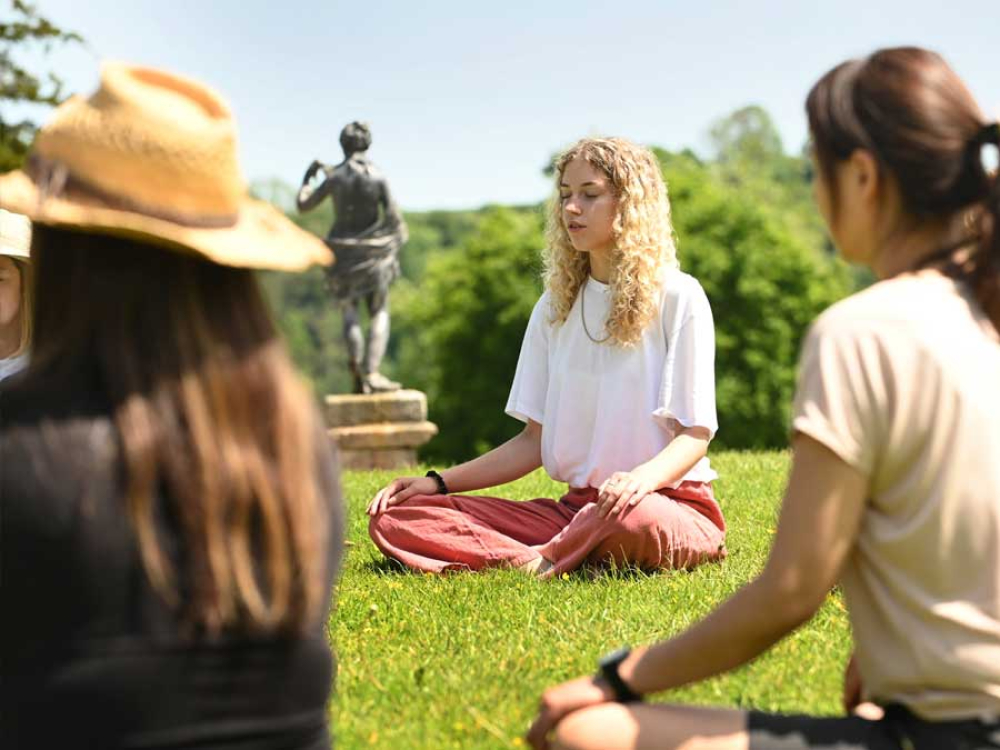What is a Retreat?
“Mindfulness is simply being aware of what is happening right now without wishing it were different; enjoying the pleasant without holding on when it changes (which it will); being with the unpleasant without fearing it will always be this way (which it won’t)” James Baraz
A mindfulness meditation retreat offers a valuable opportunity to step out of everyday life to focus on being rather than doing. Without our usual distractions and diversions we meet our experience as it arises with a sense of spaciousness, care and compassion.
View a video of Sharpham House retreats
View a video that give you a flavour of what coming on retreat at Sharpham can be like.
See our amazing (and tranquil) scenery, our beloved nearby River Dart, the types of activities you might experience and some of the delicious vegetarian and vegan food that's on offer from our amazing gardens and kitchens.
If you'd like to look through the retreats we have offer currently, visit our Calendar here
Start with the breath
When we sit in meditation we usually begin with developing mindfulness of our breathing to help us to steady our minds.
Each time our mind wanders and we become distracted (which naturally happens), we bring our attention back to our breath. This practice of focus and awareness can be extended to encompass all of our experience including our physical sensations, thoughts, feelings and emotions.
Being with our direct experience in this way can allow us insight into the nature of our lives, which in turn can lead to self-knowledge and insight.
A transformative experience...
Mindfulness and retreating can sometime be portrayed in the wellness industry as being all about generating a sense of calm and relaxation.
Although this can sometimes be the case, another perhaps more helpful way of seeing mindfulness practice is the way in which it can support our capacity to be with and transform our difficult feelings, emotions and life challenges.
In this way we can live out of awareness rather than reactivity and make better choices for our lives; cultivate positive rather than negative thoughts and feelings states and be better placed to contribute and be of benefit to the beings we share with this planet with.
What happens on a Sharpham Trust mindfulness retreat?
When you come on a mindfulness retreat at Sharpham you will experience the following across all of our retreat venues:
- Three 30-40 minute formal meditation sessions per day. This is mainly sitting meditation, some silent, some guided. Leaders can help with sitting posture which can be on a chair, stool or matt or even lying down where people might have physical difficulties.
- Nature-based mindfulness practice either through gardening or nature-connection and nature-sensing activities on the land
- Self-compassion or metta-based practices
- Some mindful movement or embodiment practice
- Periods of silence to help you deepen into mindfulness practice
- The chance to bring mindfulness into some everyday tasks and activities
- The opportunity to share your mindfulness experience in the supportive company of fellow retreatants (sometimes we learn the most from listening to each others experience) See below.
- Guidance about how to integrate mindfulness practice into your everyday life
Guidelines for sharing
1. These sessions are your opportunity to share and reflect on our experience of practice and being on retreat. It’s not a therapy group so only share what you feel comfortable sharing. It’s also absolutely fine to say pass if you don’t feel like sharing
2. Practice deep listening and loving mindful speech - listening and speaking as a mindfulness practice
3. Avoid giving advice, even if it’s asked for
4. All that arises is confidential, or “What is said here stays here”
5. Refrain from speaking a second time until it appears that everyone who wants to speak has spoken.
6. Share with the Whole Circle – speak to the circle rather than engaging in cross talk with individuals








